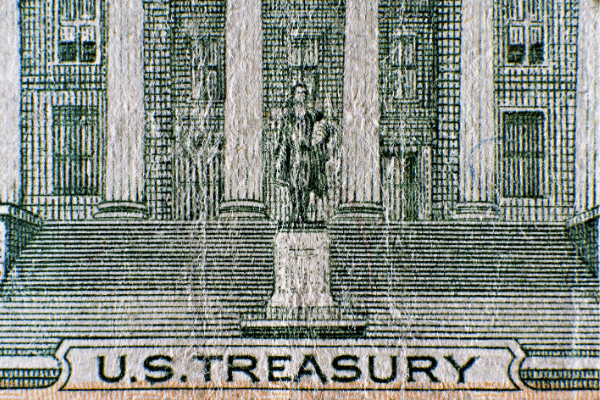
-
U.S. short-term Treasury Bills are increasingly in short supply, despite their necessity to act as collateral in a wide range of other trades and transactions
-
Shortage of short-term Treasury Bills could see momentary market shocks towards the end of March, especially if the U.S. Federal Reserve is slow to respond or does not anticipate the problem
Markets have an uncanny habit of turning south in the months of March and September and there are signs, albeit tenuous ones, that suggest next month may be the same, because the last two weeks of March look like a set-up for potential panic in the U.S. Treasuries and mortgage-backed securities markets.
While not likely to be cataclysmic, the market shocks could leave some investors, well, shocked.
Since the beginning of this year, the yield on short-term U.S. Treasury Bills has fallen by over 66%, while the yield for a 2-year U.S. Treasury Note slid by over 21% – dramatic moves in what are some of the most broadly traded securities.
Treasury Bills are a form of short-term U.S. government debt that can be readily lent, and re-lent, or otherwise pledged as collateral to secure other, unrelated transactions – think of them as similar to traveler’s checks for governments that are as good as cash.
But when trust is sorely wanting in the financial system, investors or institutions, demand more collateral, for instance by way of asking for more Treasury Bills to secure commitments.
Disconcertingly, distrust appears to be rising, and fast – which can be noticed not only at the outcome of official Treasury Bill auctions, but at the range of bids at those auctions.
How an auction works is that dealers will bid on the rate (or yield) that they are willing to accept on a Treasury Bill – the lower the rate, the more likely they will win the bid, because the U.S. government will get to borrow more cheaply.
Low bids typically suggest that dealers are willing to accept very low rates, just to make sure they get some of that collateral and historically, that’s happened at systemic stress points or as a precursor to market crises.
And that’s why conversely, the yields on longer dated U.S. Treasuries such as the 10-year and 30-year, have surged in recent weeks to record highs.
Short-term Treasury Bill liquidity is drying up, just as the U.S. Treasury Department is seeking to rebalance its issuance, by redeeming Treasury Bills and selling more long-dated bonds.
All of which is building up to a perfect storm in March, similar to the one experienced last March when the coronavirus pandemic led to an overnight shortage in Treasury Bills as investors clamored for safe and liquid securities.
Treasury Bills are very actively traded in the secondary market, with an average of US$600 billion in daily transactions, and most of that activity is for short-term U.S. Treasury Bills, which are the easiest for investors to value and which are also those in the most short supply at the moment.
And last March, in the midst of the coronavirus pandemic, the usually deep and highly liquid secondary markets in U.S. Treasury Bills dried up almost overnight.
Because these securities are also used as collateral in many other markets, the ability of traders to trade in those other markets was also gummed up – the financial system lurched.
Fortunately, the U.S. Federal Reserve intervened at the time to stabilize the Treasury markets and restore normalcy, it remains to be seen if they’ll be able to do the same this March.



